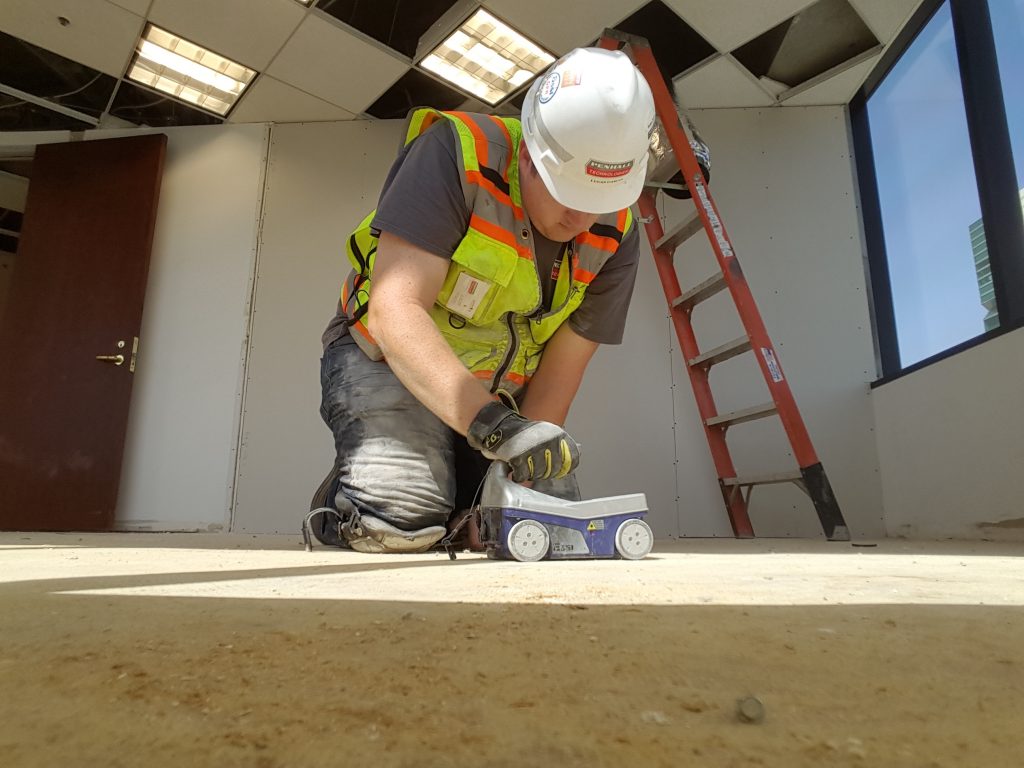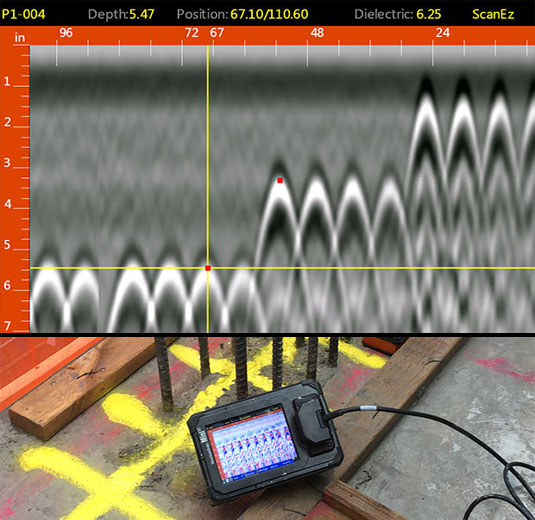Selecting the Right Concrete Scanning Devices
Selecting the Right Concrete Scanning Devices
Blog Article
Past the Surface Area: Leveraging Advanced Concrete Scanning Techniques for Unmatched Accuracy and Understanding
In the realm of construction and framework upkeep, the quest for accuracy and thoroughness is incessant. Advanced concrete scanning techniques have become crucial tools in this search, supplying a look below the surface to unveil a globe of essential understandings. By using advanced technologies, experts can reveal anomalies, evaluate the condition of concrete frameworks, and make informed decisions that form the course of jobs. The ramifications of these methods prolong much beyond plain surface-level evaluations, assuring a depth of accuracy and understanding that is unequaled.
Value of Advanced Concrete Scanning
The value of utilizing advanced concrete scanning techniques hinges on the unparalleled accuracy they use for spotting sub-surface anomalies and making sure architectural honesty. By using cutting-edge technologies such as ground-penetrating radar (GPR), electromagnetic induction, and advanced sonar imaging, construction experts can dive underneath the surface area of concrete frameworks with a degree of accuracy that much goes beyond typical inspection approaches. Concrete Scanning. These strategies make it possible for the recognition of surprise dangers like rebar rust, spaces, channels, or post-tension cords that might jeopardize the stability and safety of a framework with time
In addition, progressed concrete scanning supplies vital insights into the general condition of a concrete element without the demand for intrusive measures, minimizing the risk of triggering damage throughout the evaluation process. The capability to pinpoint the exact area and deepness of potential issues permits targeted repair services and maintenance, eventually lengthening the life-span of the structure and optimizing its efficiency. Fundamentally, the importance of advanced concrete scanning can not be overemphasized in the realm of construction and infrastructure upkeep, where accuracy and dependability are critical.
Kinds Of Cutting-Edge Technologies

Anomalies and Problem Detection

Along with GPR, concrete scanning methods like thermography and impact-echo testing are likewise efficient in spotting anomalies and issues. Thermography uses infrared modern technology to recognize variants in surface area temperature level, showing possible locations of concern such as delamination or moisture ingress. On the other hand, impact-echo testing includes evaluating acoustic actions to identify voids, cracks, and other issues within the concrete. By leveraging these advanced techniques, experts can proactively resolve structural problems, making certain the long life and safety and security of concrete frameworks.
Assessing Concrete Condition
How can engineers accurately evaluate the condition of concrete frameworks to guarantee their durability and safety and security? Examining the concrete condition is a vital element of preserving facilities stability. Various advanced concrete scanning strategies are employed for this objective. Ground-penetrating radar (GPR) is frequently made use of to analyze the interior framework of concrete, finding spaces, cracks, and various other abnormalities that may compromise its strength. Additionally, impact-echo screening can give understandings into the density and stability of concrete aspects. Ultrasonic pulse speed testing is one more important technique for assessing concrete high quality by determining the speed of acoustic waves via the product.
Moreover, visual examination stays a fundamental part of concrete problem evaluation. Designers visually analyze the surface area for indicators of wear and tear, such as spalling, fracturing, or staining. Combining non-destructive testing techniques with visual examinations enables an extensive examination of concrete condition, making it possible for designers to recognize prospective issues beforehand and execute timely upkeep or repairs. By leveraging these advanced methods, designers can guarantee the long-lasting longevity and safety and security of concrete frameworks.
Enhancing Decision-Making Procedures
In the world of framework management, enhancing decision-making processes is crucial for ensuring the effective maintenance and long life of concrete structures. Boosted decision-making procedures in concrete administration entail making use of advanced scanning methods to gather thorough data on the condition of frameworks. By leveraging technologies such as ground-penetrating radar and 3D imaging, stakeholders can make enlightened choices relating to replacement, repair service, or reinforcement strategies.
These progressed scanning strategies offer vital understandings right into the inner make-up of concrete, determining potential problems such as spaces, splits, or corrosion that may not be noticeable on the surface. This level of in-depth find more information information permits positive upkeep preparation, minimizing the threat of architectural failings and increasing the total life expectancy of concrete structures.
In addition, by including digital paperwork and evaluation tools right into the decision-making process, stakeholders can track the development of concrete conditions over time, making it possible for anticipating upkeep approaches and enhancing source appropriation. Inevitably, the assimilation of sophisticated concrete scanning strategies improves decision-making processes by offering unparalleled precision, understanding, and effectiveness in framework monitoring.
Conclusion
In conclusion, progressed concrete scanning techniques provide exceptional precision and insight in discovering anomalies, issues, and analyzing the problem of concrete structures. By leveraging advanced technologies, decision-making procedures can be improved, resulting in more enlightened and effective remedies for keeping and repairing concrete infrastructure. These techniques play a crucial role in ensuring the safety and security and durability of concrete structures, making them a crucial tool in the field of building and construction and engineering.
Moreover, progressed concrete scanning provides very useful understandings right into the general condition of a concrete aspect without the need for intrusive measures, decreasing the risk of creating damage throughout the evaluation procedure - Concrete Scanning. One more cutting-edge innovation is 3D X-ray scanning, which gives comprehensive photos of the interior framework of concrete, additional info using valuable details without the need for devastating screening. Additionally, Concrete Cover Meters are made use of to measure the density of concrete cover over reinforcement bars properly. Boosted decision-making processes in concrete monitoring include utilizing advanced scanning techniques to gather thorough data on the condition of frameworks.In verdict, progressed concrete scanning methods use exceptional precision and understanding in spotting abnormalities, defects, and evaluating the problem of concrete structures
Report this page